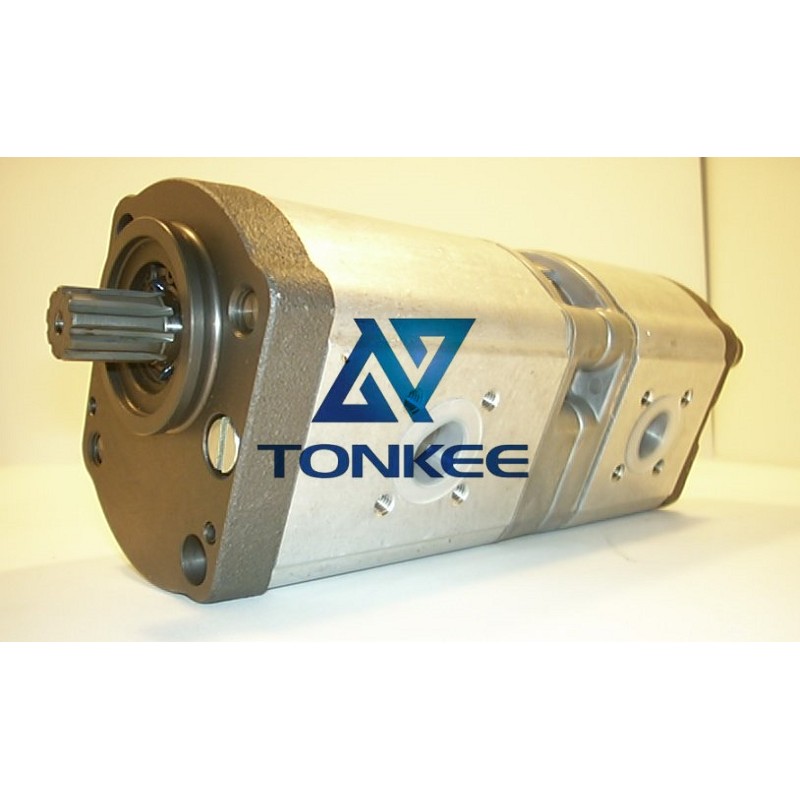
The flow rate of a hydraulic gear pump, often measured in gallons per minute (GPM) or liters per minute (LPM), is a fundamental specification.
It determines how much hydraulic fluid the pump can deliver to the system. The flow rate should match the requirements of the hydraulic system it serves.
Displacement:
Displacement refers to the volume of fluid displaced by the pump in a single revolution. It's usually measured in cubic inches or milliliters per revolution (in³/rev or ml/rev). Displacement affects the flow rate, as a larger displacement pump will typically produce a higher flow rate.
Pressure Rating:
The pressure rating of the FRONT HYDRAULIC GEAR PUMP is a critical specification. It defines the maximum pressure the pump can handle without experiencing damage. It's typically measured in pounds per square inch (PSI) or bar. It's crucial to choose a pump with a pressure rating that exceeds the maximum operating pressure of the hydraulic system.
Operating Speed:
The pump's operating speed, often stated in revolutions per minute (RPM), indicates how fast the pump's shaft needs to rotate to deliver the required flow rate and pressure. The operating speed should be within the pump's specified range for optimal performance.
Efficiency:
Efficiency is a measure of how effectively the pump converts mechanical energy (from a motor or engine) into hydraulic power. Higher efficiency pumps generate less heat and consume less energy. This specification is typically expressed as a percentage.
Mounting Configuration:
The FRONT HYDRAULIC GEAR PUMP can come in various mounting configurations, such as flange-mounted or inline.
The choice of mounting configuration depends on the available space and the specific requirements of the hydraulic system.
Port Size and Type:
Port size and type determine how the pump connects to the hydraulic circuit. Common port types include SAE, NPT, and BSP. The choice depends on compatibility with the rest of the hydraulic components.
Material of Construction:
The material used to construct the pump affects its durability and compatibility with different hydraulic fluids. Common materials include cast iron, aluminum, and stainless steel. The choice should consider the fluid being used and environmental conditions.
Noise Level:
The noise level produced by the pump can be a critical factor in certain applications. Pump manufacturers often provide noise level specifications in decibels (dB).
Maintenance Requirements:
Understanding the maintenance requirements, including service intervals and recommended procedures, is essential for keeping the pump in optimal working condition. Some pumps may require periodic maintenance such as oil changes or seal replacements.